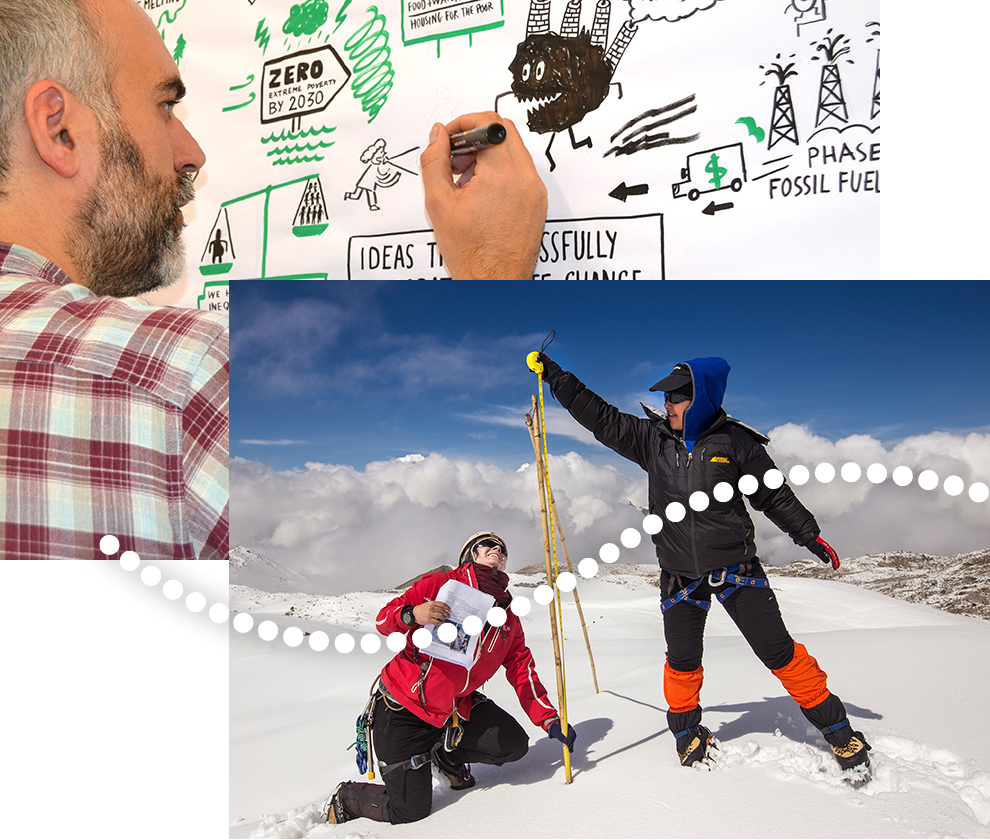Decoding buzzwords at SB58: what is transformational adaptation?

Introduction
This perspective is reposted from SEI, where it was originally published on June 13th 2023.
Here at the Bonn Climate Change Conference 2023 (SB58), “transformational adaptation” is the phrase echoing around the corridors and assembly rooms. Everyone recognizes the challenges associated with planning and implementing adaptation action, such as the inaccessibility of finance and the short-term nature of project-based cycles. These issues result in adaptation efforts that, being incremental and small in scale, often fall far short of what is needed to manage escalating climate risk in our interconnected world.
However, “transformational adaptation” means different things to different people. In the myriad conversations taking place at these intersessionals, it is becoming increasingly clear that we need clearer definitions of the term to pave the way towards a common understanding and consensus at COP28. Donors, understandably, find it challenging to invest in a concept that, while recognizing the scope of the problem, lacks a clear roadmap of implementable solutions. This endeavour invites contributions from all Parties and Observers, leveraging their rich experiences and diverse perspectives, and building on some of the impressive efforts to date.
Key Messages
To help consolidate our understanding of transformational adaptation, I propose three key dimensions for consideration:
1. Adaptation that is strategic: transformational adaptation should be holistic and coherent.
Research from the CASCADES project highlights the importance of strategies that coherently address the risks to our economies, societies and ecosystems. Such a strategy requires comprehensive risk and vulnerability assessments that illuminate the projected impacts of climate change on every sector of society. Whether it is health plans, trade relationships, agriculture, diplomacy, investment portfolios, shared ecosystems, or jobs and wellbeing – everything is intertwined. To achieve this, we may need to consider institutional reform within regional bodies and governments to elevate the political importance of adaptation and facilitate centralized decision-making about policy trade-offs. Crucially, it calls for a whole-of-government approach where multiple ‘risk owners’ draft and implement adaptation plans, not just environment ministries. This strategy would also emphasize large-scale adaptation actions that transcend timebound projects and aim to manage risks across entire systems and sectors, with associated levels of funding and support.
2. Adaptation that is cross-scale: transformational adaptation should recognize the transboundary and cascading risks of climate change.
The Adaptation Without Borders global partnership suggests that national risk assessments must consider impacts beyond a country’s border.Might a country face risks from climate change because of the high levels of food they import, which might be harder to grow or transport in a warmer world? Or because of its foreign direct investments or reliance on remittances from areas where climate change is projected to have adverse effects? Or because climate change could increase inbound migration or decrease numbers of tourists? Or because climate change will disrupt a shared ecosystem (mountains, rivers, deserts, seas)? The pivotal role of regional bodies and organizations with mandates to support the coordination of adaptation efforts between their members becomes clear; the African Union, European Union and governments of the Hindu Kush (among others) are already taking steps towards this. It also means a much greater role for international organizations to support enhanced cooperation on adaptation to build resilience to truly global and systemic risks (think WHO on health, WFP on food security, and so on).
3. Adaptation that is socially just: transformational adaptation should actively reduce inequality, prioritizing the resilience and rights of marginalized groups.
Our research on measuring justice in climate change adaptation indicates that transformational adaptation means adaptation plans and strategies that go beyond aiming to maintain the ‘status quo’ and instead aim to tackle the root causes of vulnerability and inequality, particularly for marginalized groups. This requires risk assessments that explore structural dynamics driving system inequalities and power asymmetries. It also calls for inclusive adaptation projects that involve the meaningful participation of the most vulnerable and prioritize their resilience, rights and wellbeing.
Building “just resilience” entails anticipating unintended consequences to prevent redistribution risk to other regions, groups or sectors – a form of maladaptation. Adaptation is not inherently benign, and it requires a reflective and deliberative effort to avoid risk transfer and ultimately leave no one behind. We are already developing indicators to assess our progress in this area, so we are not starting from scratch.
Reflections
If we realize these three attributes – strategic, cross-scale and socially just adaptation – we move closer to making adaptation truly transformational. Each dimension provides practical steps to work towards and measure our progress against, including through the lens of the four dimensions of the adaptation policy cycle outlined in the evolving framework for the Global Goal on Adaptation.
If the COP28 Presidency wants to leave a legacy, embracing an Emirates Agenda on Transformational Adaptation – working through and building on the framework for the Global Goal on Adaptation to be agreed this year – could be the way forward.

Comments
There is no contentYou must be logged in to reply.